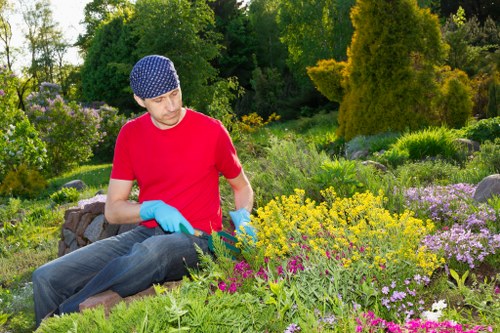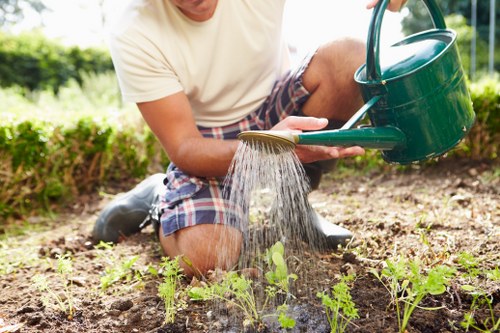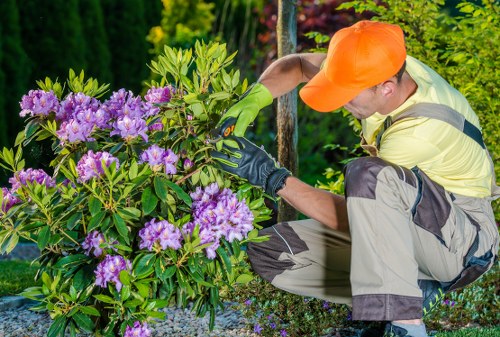Gardeners Poplar: Nurturing Nature and Community

Gardeners Poplar is a unique and fascinating subject that interlaces the art of gardening with the natural beauty of poplar trees. In gardens around the world, poplars are celebrated for their graceful stature and rapid growth, making them a favorite among horticultural enthusiasts and landscape designers. These trees not only enhance outdoor spaces but also provide a symbol of renewal and community spirit. Every gardener who works with poplar trees understands the joy of nurturing living nature, witnessing the transformation of a simple seedling into a mighty tree that stands as a testament to care and time. In many communities, the poplar tree has grown into a cultural icon, inspiring traditions and environmental efforts that bind people together.
The influence of Gardeners Poplar reaches far beyond mere gardening techniques. History teaches us that poplars have been planted around religious sites, educational institutions, and even in government parks as symbols of resilience and hope. Gardeners have long revered the poplar tree not only for its beauty but also for its practical benefits, such as providing shade, improving air quality, and serving as windbreaks in both rural and urban settings. The legacy of poplar horticulture is embedded in many gardening manuals and is frequently passed on from generation to generation, showcasing its timeless appeal.
For many, tending to a poplar tree becomes more than just a gardening project—it evolves into a way of life that blends tradition with modern techniques. The dedication and empathy that gardeners invest in nurturing these trees echo the broader responsibilities we share with our environment. As people seek balance between urban development and green spaces, the poplar stands as a natural icon advocating for responsible management and sustainable growth. This journey is deeply emotional, reflecting the passion of individuals dedicated to making their natural surroundings thrive.
The Legacy and Importance of the Poplar in Gardening

The history of gardening has always celebrated the poplar as a stalwart presence. The poplar tree care methods have evolved alongside our knowledge of botany and sustainable practices. Gardeners have relied on both traditional and innovative techniques to ensure these trees flourish, drawing from wisdom accumulated over centuries. In recent decades, urban planners and eco-friendly initiatives have embraced poplar trees for their capacity to improve city landscapes. With deep roots in both history and culture, poplar trees remind us of nature’s persistence amidst change.
In many parts of the world, poplars are recognized not only for their tall and striking appearance, but also for their environmental contributions. The leaves, bark, and even the wood of poplar trees play important roles in local ecosystems, supporting wildlife while simultaneously enhancing property values. The complex relationship between gardeners and these majestic trees brings to light the fundamental bond between man and nature, a connection that is nurtured through every seasonal change and every careful pruning session. Urban greening strategies often highlight the poplar as a key element in developing sustainable and livable cities.
Gardeners, environmental experts, and community activists are increasingly working to promote poplar tree health in a world facing ecological challenges. They employ practices such as responsible watering, integrated pest management, and soil care to ensure that the poplar can thrive even under the strains of modern climate change. This resolute approach to conservation is enhanced by local workshops and community-driven initiatives that underscore the benefits of these trees. By blending science with passion, communities are able to preserve this living legacy for future generations.
Cultivating Gardeners Poplar: Practices and Benefits
Modern Techniques in Poplar Gardening

Modern gardening practices have seen a significant evolution in the way poplar trees are cultivated. Gardeners now incorporate techniques like organic composting, strategic pruning, and advanced irrigation systems that cater specifically to the needs of poplar trees. These practices not only ensure robust growth but also help maintain the tree’s natural vigor and beauty. Poplar tree maintenance is a craft that requires both technical expertise and an empathetic touch; understanding the delicate balance between water, nutrients, and sunlight is vital for sustained growth. As techniques evolve, gardeners continue to share innovative tips through community seminars and online platforms, creating a knowledge network that benefits urban green spaces and private gardens alike.
The integration of technology in gardening has also influenced poplar tree care. Digital tools now assist gardeners in monitoring soil moisture, detecting pests early, and even predicting growth trends. This scientific approach is blended with traditional wisdom, resulting in effective strategies that have been practiced for generations. Many local horticultural societies offer hands-on workshops where these modern techniques are demonstrated, emphasizing the importance of sustainable practices. The commitment to innovation reflects a broader community effort to combat environmental degradation while celebrating the splendor of nature.
Beyond the technical aspects, caring for poplar trees is deeply emotional. The act of planting and maintaining a poplar can be seen as a metaphor for personal growth and long-term commitment to the environment. Gardeners speak of the satisfaction experienced when a sapling matures into a towering figure, as if nature were giving back for the care it receives. This passionate commitment, strengthened by ongoing education and community engagement, has led to a resurgence in traditional gardening methods intermingled with modern environmental science. It creates a dynamic ecosystem where history, community, and nature intertwine.
Local Relevance: Poplar and its Surroundings
Nearby Communities

The influence of poplar trees extends well beyond individual gardens, reaching into neighborhoods and entire regions. In the heart of many communities, poplar trees serve as milestones that define local culture and identity. For instance, areas such as East Poplar and West Poplar offer residents a chance to experience the serene beauty of these trees in community parks and along tree-lined streets. Their towering presence provides shade on hot summer days and a natural barrier in busy urban environments. Residents often gather around poplar groves for community events, celebrations, and local environmental fairs.
Other nearby regions, like North Poplar and South Poplar, are also well recognized for the effort that goes into cultivating green spaces. These areas are celebrated for their scenic beauty and commitment to maintaining an eco-friendly environment. Local garden clubs often join forces with municipal initiatives to plant and care for poplar trees, ensuring everyone benefits from improved air quality and the aesthetic appeal of vibrant green spaces. Here, poplar trees act as living landmarks that signal community progress and the collective will to embrace nature.
Further afield, communities such as Central Poplar, Riverside Poplar, Lakeview Poplar, Greenfield Poplar, Meadow Poplar, Hilltop Poplar, Old Town Poplar, and New Creek Poplar each hold their own unique charm. These areas, while close to one another, offer diverse landscapes ranging from riverbanks to rolling hills and vibrant urban centers. Each locality prides itself on blending urban greening with practical horticulture, making poplar trees central to both the social and ecological narratives in these communities.
Embracing Community and Conservation in Gardeners Poplar
Sustainable Future

Today, the journey of Gardeners Poplar is marked by a renewed commitment to environmental conservation and community stewardship. Gardeners and environmental activists work side by side to ensure that poplar trees continue to prosper in a rapidly changing world. Their efforts focus not only on traditional tree maintenance but also on innovative conservation practices that emphasize sustainability and ecological balance. In many community projects, a mixture of modern technology and age-old gardening techniques are used to reduce water usage and maximize growth. These strategies ensure that poplars remain a vibrant part of both private gardens and larger urban landscapes.
The role of poplar trees in urban settings cannot be understated. As cities expand and the need for green infrastructure grows, poplar trees symbolize the intersection of aesthetic beauty and practical benefits. Gardeners take pride in their work as they prune, water, and nurture these trees, knowing that each action contributes to a larger environmental cause. Community conservation initiatives aim to educate locals on the importance of trees in combating urban pollution and enhancing quality of life. These efforts often include workshops, tree-planting events, and public discussions about ecological responsibility, creating an interconnected network of individuals who care passionately for their environment.
Looking ahead, the future of Gardeners Poplar is filled with promise. Many experts advocate for increased research on sustainable gardening practices that integrate traditional knowledge with modern science. By fostering a sense of shared responsibility, communities are better equipped to meet future environmental challenges. The passion for caring for these trees goes hand in hand with protecting biodiversity and preserving natural habitats. Ultimately, the story of Gardeners Poplar is one of hope, resilience, and the belief that every individual can make a difference—one tree, one garden, and one community at a time.
Frequently Asked Questions
- Q: What makes poplar trees a favorite among gardeners?
A: Poplar trees are highly favored for their rapid growth, attractive appearance, and practical benefits such as providing shade, improving air quality, and enhancing garden design. They also have historical and cultural significance that resonates with many communities. - Q: How do gardeners ensure poplar tree health?
A: Gardeners use a mix of traditional and modern techniques including regular pruning, proper watering, organic composting, and integrated pest management to maintain robust poplar tree health. - Q: Can poplar trees thrive in urban environments?
A: Yes, poplar trees adapt well to urban settings due to their fast growth and ability to improve the micro-climate. Urban greening projects often rely on poplar trees to create green spaces and curb pollution. - Q: What local areas are recognized for their poplar trees?
A: Several areas such as East Poplar, West Poplar, North Poplar, South Poplar, Central Poplar, Riverside Poplar, Lakeview Poplar, Greenfield Poplar, Meadow Poplar, Hilltop Poplar, Old Town Poplar, and New Creek Poplar are celebrated for their poplar trees and community green spaces. - Q: How do poplar trees benefit the environment?
A: Poplar trees help reduce urban heat, improve air quality, prevent soil erosion, support local wildlife, and contribute significantly to the overall ecological balance in both rural and urban areas.